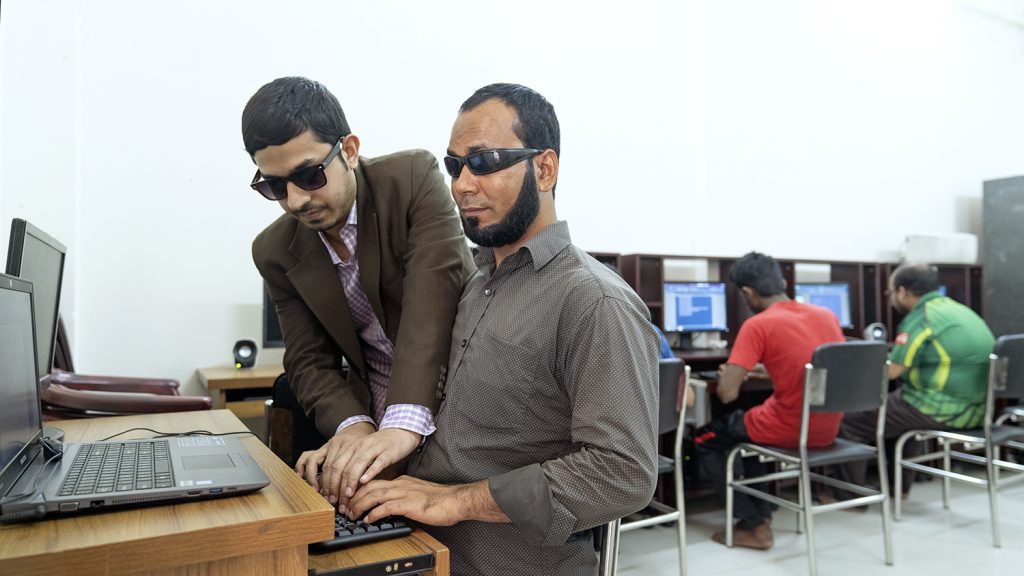Website accessibility
We believe the web should be accessible to everyone, regardless of ability, background or access to technology, which is why we are making digital accessibility a priority on our website.

Accessibility is fundamental and at the heart of our Inclusive Futures work. We recognise the importance of ensuring our website reflects these values.
If you have feedback or suggestions about how we can make this website more accessible, we’d love to hear from you. Email accessibility@sightsavers.org to share your thoughts with us.
Introduction
We comply with Web Content Accessibility Guidelines (WCAG 2.1) to the greatest degree we can. We believe our site and content to be AA standard and where possible we extend this to AAA compliance.
We test this website for digital accessibility using various devices, from desktop computers to smartphones, and ensure we test for both mouse and keyboard navigation and screenreading technology such as JAWS, Apple Voiceover and Microsoft Narrator.
We also work to make our PDF publications as accessible as possible, and aim to provide HTML alternatives.
We are continuing to evolve our accessibility work for the web, for print and at our events. This activity is spearheaded by the collective work we all do within our individual organisations.
Colours
We’ve designed our pages and chosen colours to make sure our designs don’t make things unnecessarily difficult for people who are visually impaired or colourblind.
Layout
We use cascading style sheets to control presentation, which means content is well structured and easy to access using assistive technology.
Typography
Our brand font, Lato, is legible and readable for the widest possible group of users and have given careful consideration to how we use text throughout the site. We have also ensured line lengths and leading (the space between lines) are set to offer a good reading experience.
Help with accessibility features
The operating system of your computer and your internet browser also has built-in accessibility features. For example, you can use your browser to help you read this website by increasing the text size on your screen:
Microsoft Internet Explorer or Microsoft Edge
- Click on ‘View’ in your menu bar.
- From the list that appears, click ‘Text size’.
- You’ll be given a list of options ranging from smallest to largest. Select the option that suits you.
Apple Safari
- Hold down the Apple Key and press the plus (+) key.
- This makes the text larger – repeat the first step to increase the text size again.
- If you need to make the text smaller, press the Apple Key on your keyboard and the minus (-) key.
Mozilla Firefox
- Hold down the Ctrl button on your keyboard and press the plus (+) key.
- This makes the text larger – repeat the first step to increase the text size again.
- If you need to make the text smaller, press Ctrl on your keyboard and the minus (-) key.
Google Chrome
- Click the ‘Customise and Control’ spanner symbol in the top right hand corner (Alt + E).
- Select ‘Settings’ or, if you are using Mac or Linux operating systems, ‘Preferences’.
- Click on ‘Under the Bonnet’ and customise your fonts and font size in the ‘Web Content’ section.
There’s a lot more that you can do with your browser, operating system and computer, tablet or smartphone to improve your browsing experience. Have a look at the BBC’s excellent My Web My Way website for guidance and step-by-step instructions.

Web Content Accessibility Guidelines (WCAG 2.1)
The checkpoints we test against are taken from the technical standard Web Content Accessibility Guidelines 2.0 (WCAG), published by the World Wide Web Consortium (W3C).
WCAG 2.1